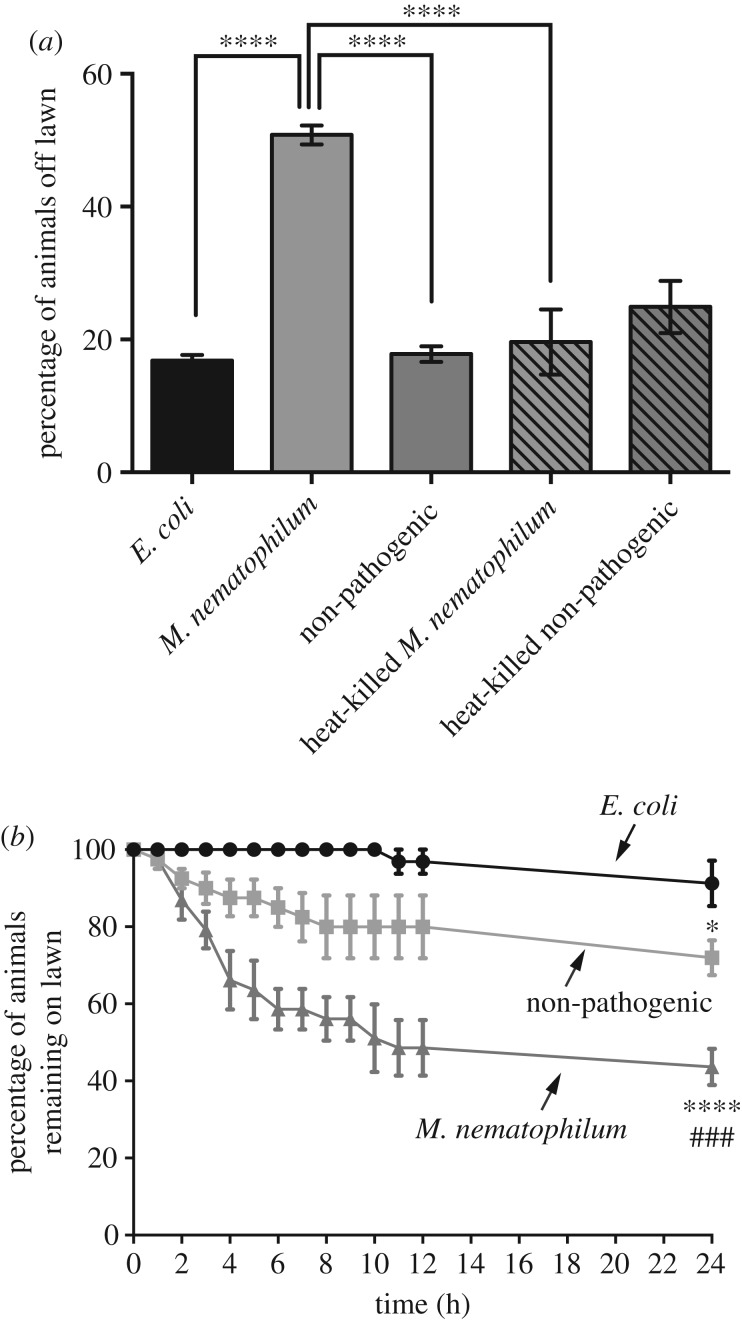Figure 1.
C. elegans avoids pathogen-contaminated lawns. (a) The percentage of wild-type animals avoiding bacterial lawns. Contamination of bacterial lawns with M. nematophilum increases lawn avoidance to 50.8% when compared with control E. coli lawns (16.8%). By contrast, lawn avoidance was not significantly increased when bacterial lawns were contaminated with either non-pathogenic or heat-killed M. nematophilum. (b) Lawn-leaving assays [23] were used to determine whether monoaxenic lawns of E. coli OP50, M. nematophilum or non-pathogenic M. nematophilum alter C. elegans behaviour. Wild-type animals remain on lawns of E. coli for the duration of the assay. By contrast, 28.1% of wild-type animals leave pure non-pathogenic M. nematophilum lawns. The percentage of animals leaving bacterial lawns is further increased to 56.4% when leaving assays are performed using pure M. nematophilum lawns. * indicates significance relative to E. coli. # indicates significance relative to non-pathogenic M. nematophilum (*p ≤ 0.05, ***p ≤ 0.001, ****p ≤ 0.0001. See Material and methods for details of statistical analysis).

